Setup for the Dissection
Preparation:
This section explains the steps necessary to prepare your crayfish
for the dissection process.
1. You will need the following tools:
Dissection Pan
| Probe
| Forceps
| Scissors | |
2. Place crayfish in Pan
Rinse the crayfish with water then place it in the dissection pan. The crayfish
should be lying on his/her ventral (stomach) side with his/her back facing up.

I.) External Anatomy
1. Place the preserved crayfish in a dissecting tray.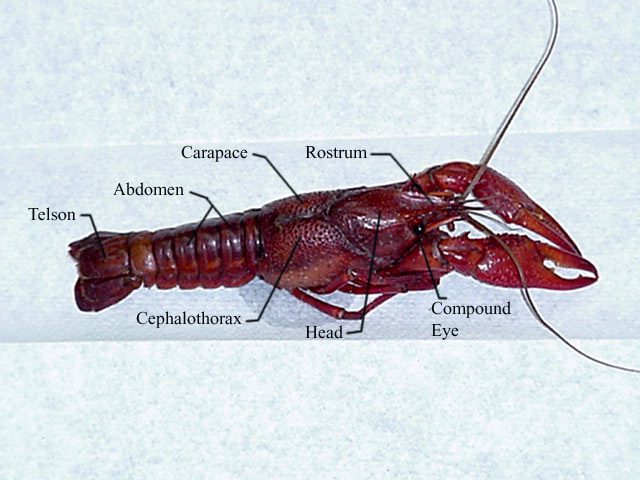
2. Note that the body of the crayfish is divided into three parts, the head, the cephalothorax and the abdomen.
3. Head - Identify the compound eyes on the rostrum portion of the head.
4. Cephalothorax - Find the Carapace, the covering of the cephalothorax region.

5. Note the larger antennae and smaller antennules protruding from the rostrum.
6. On the ventral side, locate the mouth with the mandibles, or true jaws. The mandibles tear the food, and the other appendages detect and hold food during feeding.
7. There are five pairs of walking legs connected ventrally to the carapace region. The first walking leg has enlarged pincers called chelipeds, and is used to manipulate objects and capture and crush food.

8. Abdomen - This section is a segmented tail. On the ventral side there are numerous swimmerets. The first pair is modified for the transfer of sperm in those that are ready to mate. Identify the uropod and the telson at the posterior end of the abdomen.
IV.) Respiratory System

1. The gills are located on the outside of the body cavity in a space between the body wall and the carapace. Remove a segment of the carapace on one side of the crayfish to expose them.

2. Detach one of the walking legs, and note the small gill that is attached to the leg.
I.) Muscles
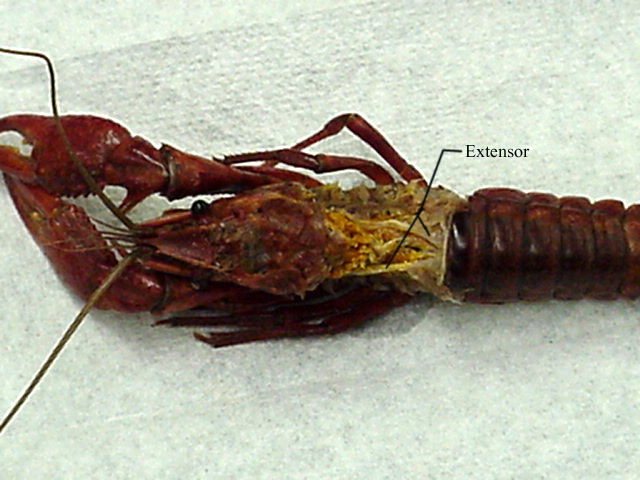
1. Note the extensor muscles, which straighten the tail, and the flexor muscles that curl up the tail and fill the abdomen of the crayfish.

IV.) Nervous System

1. Locate a pair of nerves leading from the ventral nerve cord around the
esophagus to the large ganglion, or brain, in the head. Short nerves
connect the eyes, antennae, and antennules to the brain.
V.) Circulatory System
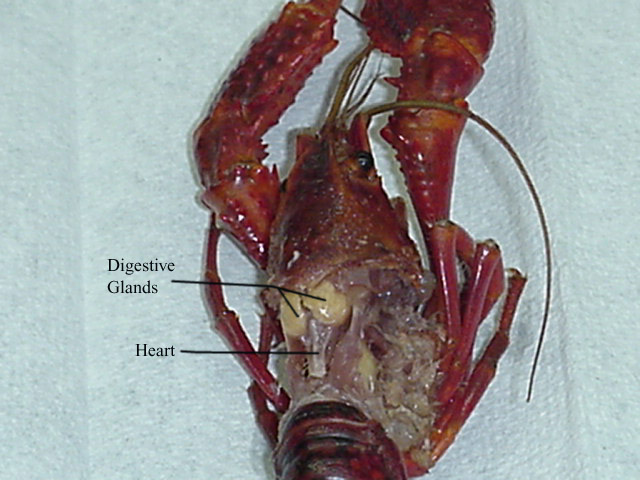
1. Locate the diamond shaped heart of the open circulatory system. The
heart sends blood into the spaces around the organs through several arteries.
After passing through the gills, the blood drains back into the heart through
the openings (ostia) in it.
VI.) Digestive and Excretory Systems

1. Trace the digestive system from the mouth through the esophagus to the cardiac stomach, where the food is ground up.

2. From the stomach, food travels to the intestine, where it is absorbed into the blood stream.
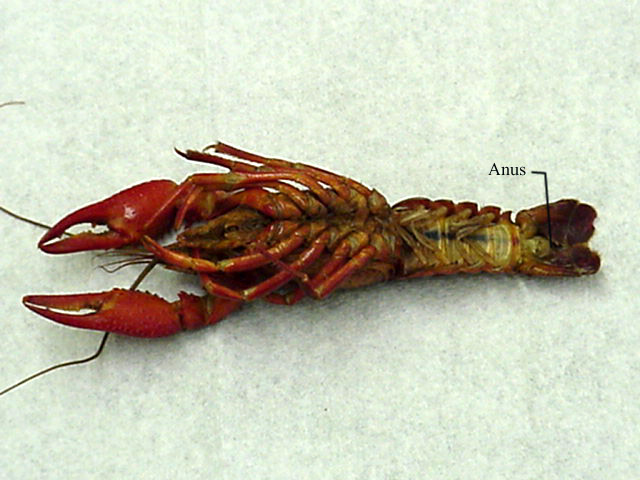
3. Next, food waste is expelled through the anus.
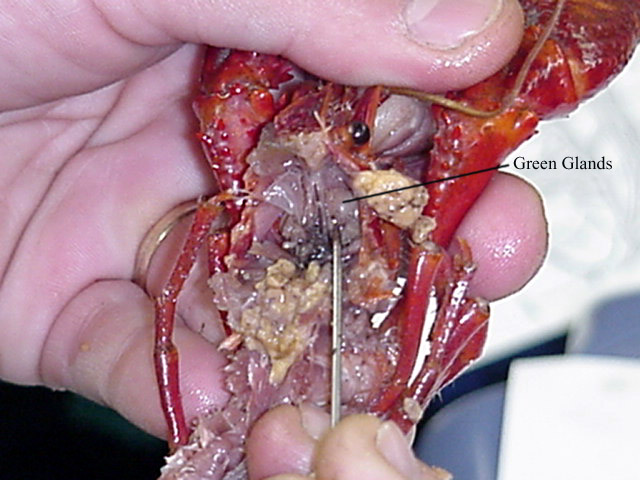
4. Find the green gland located internally just behind each antenna and right under the brain. These structures filter fluid waste from the blood.
VIII.) Male Anatomy

1. Remove the heart in order to see the gonads (reproductive organs; in
males, the testes.) Locate the testes in the male crayfish. Be cautious
when trying to find them because they are extremely small.
IX.) Female Anatomy

1. Locate the creamy - yellow ovaries in the female crayfish.
X.) Cleanup
1. Dispose of all crayfish parts properly in the container marked animal waste. Do not leave any parts in the trash cans or sink.
2. Rinse and dry all equipment used, including the dissecting pan.